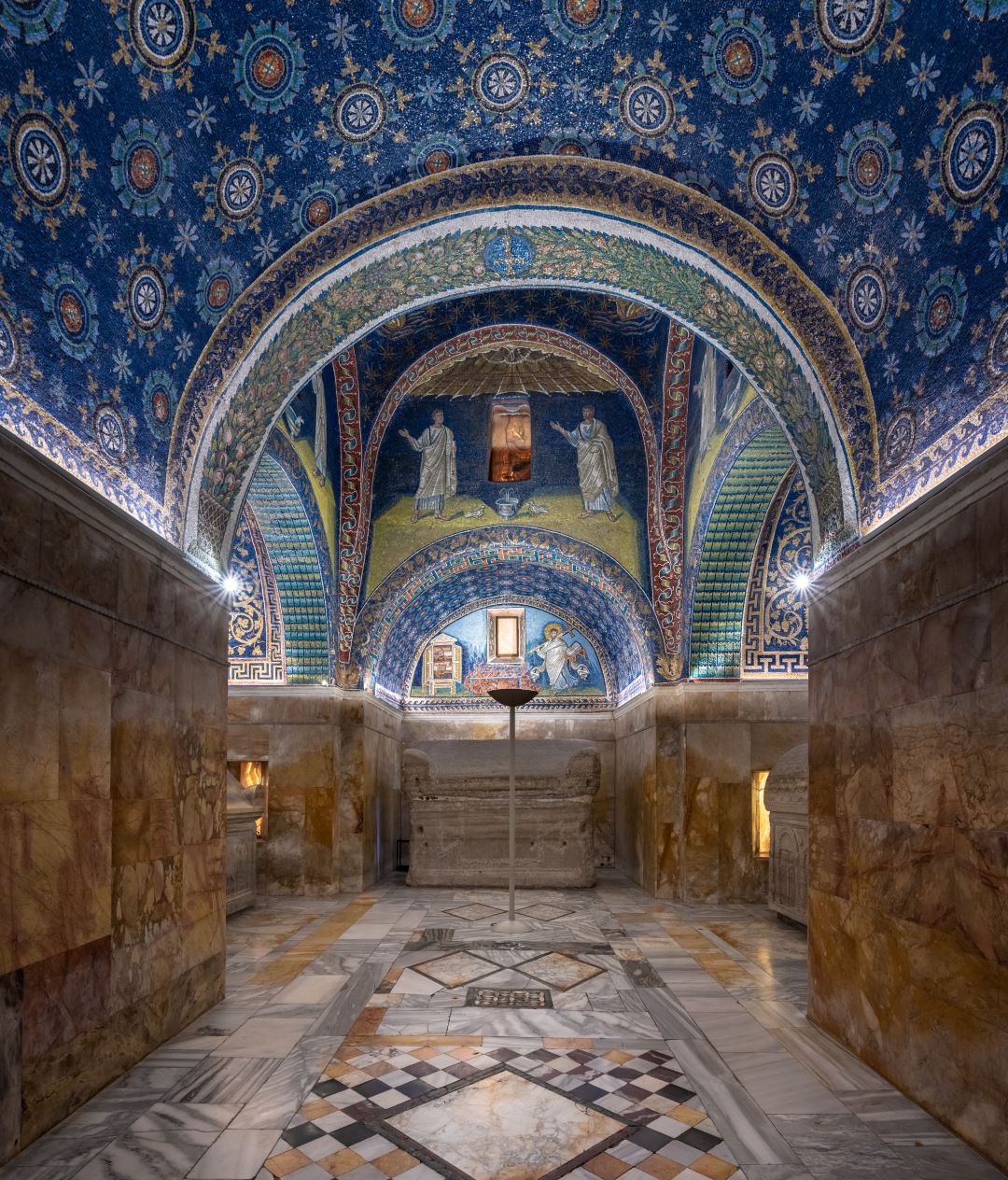
Mausloeum of Galla Placidia
The Mausoleum of Galla Placidia, built in 425 A.D., with its unique early Christian mosaics, is one of the eight amazing UNESCO World Heritage sites in the city of Ravenna.






WHY IS A UNESCO WORLD HERITAGE SITE
The Mausoleum of Galla Placidia is one of the most extraordinary monuments of late-Antiquity that has survived intact, both architecturally and decoratively. A cultural bridge between Rome, Constantinople and Milan, where Ravenna and Hellenistic-Roman features coexist in the mosaics.
The exterior of the building is made of simple red bricks, with a cruciform plan topped by a central quadrangular tower. It was once connected by a portico (narthex) to the now-lost Church of Santa Croce, of which it was an annex, likely serving a funerary purpose.
Commissioned in 426 AD by Empress Galla Placidia – a strong-willed woman with remarkable political acumen who greatly influenced the city’s architecture. She attracted some of the finest artists and craftsmen of the time, especially from Constantinople.
The interior of the mausoleum still leaves us breathless today. The theme of the mosaic depictions, designated a UNESCO World Heritage Site in 1996, centers on the Cross as a symbol of Salvation and Eternal Life. Countless polychrome glass and gold tesserae – set at varied angles to refract the light filtering through the alabaster windows – form images that pulse in the dim light. The mosaics blend the vibrant imitation of nature typical of Greco-Roman art with the rigidity and stylization characteristic of Byzantine art.
Via San Vitale, 17, 48121 Ravenna RA
Admission: €10.50
Concession: €9.50€ (*)
The combined ticket includes the entry to Basilica of Sant’Apollinare Nuovo, Neonian Baptistery (**), Basilica of San Vitale, Mausoleum of Galla Placidia (**), Archiepiscopal Museum and Chapel.
The ticket is valid for 7 consecutive days from the date of issue and entitles the holder to one entry to each monument.
* Valid for Italian and foreign students during the school year; groups (min. 20 paying persons); for organizations with special agreements (see details).
** For the Mausoleum of Galla Placidia and the Neonian Baptistery is an additional charge of €2 and a mandatory booking. The charge applies also to children over 6 and residents of the Municipality of Ravenna.
BOOKING
Tickets can be booked online or by contacting the Reservation Centre.
In addition, tickets can also be purchased on the day of visit at the ticket offices located at the following monumental complexes (priority to pre-booked and pre-sale tickets, subject to availability).
For further information: www.ravennamosaici.it
Children up to 10 years, people with certified disability over 74% or “carta bianca” holders, ecclesiastics, servicepersons, tourist guides of Regione Emilia-Romagna at work.
Journalists must request a written permit of free admission in advance to the Opera di Religione by writing to info@ravennamosaici.it
For groups: 1 free tour leader every 20 paying visitors. For schools: 1 free teacher every 10 paying students

Select a language
Selected
Other languages